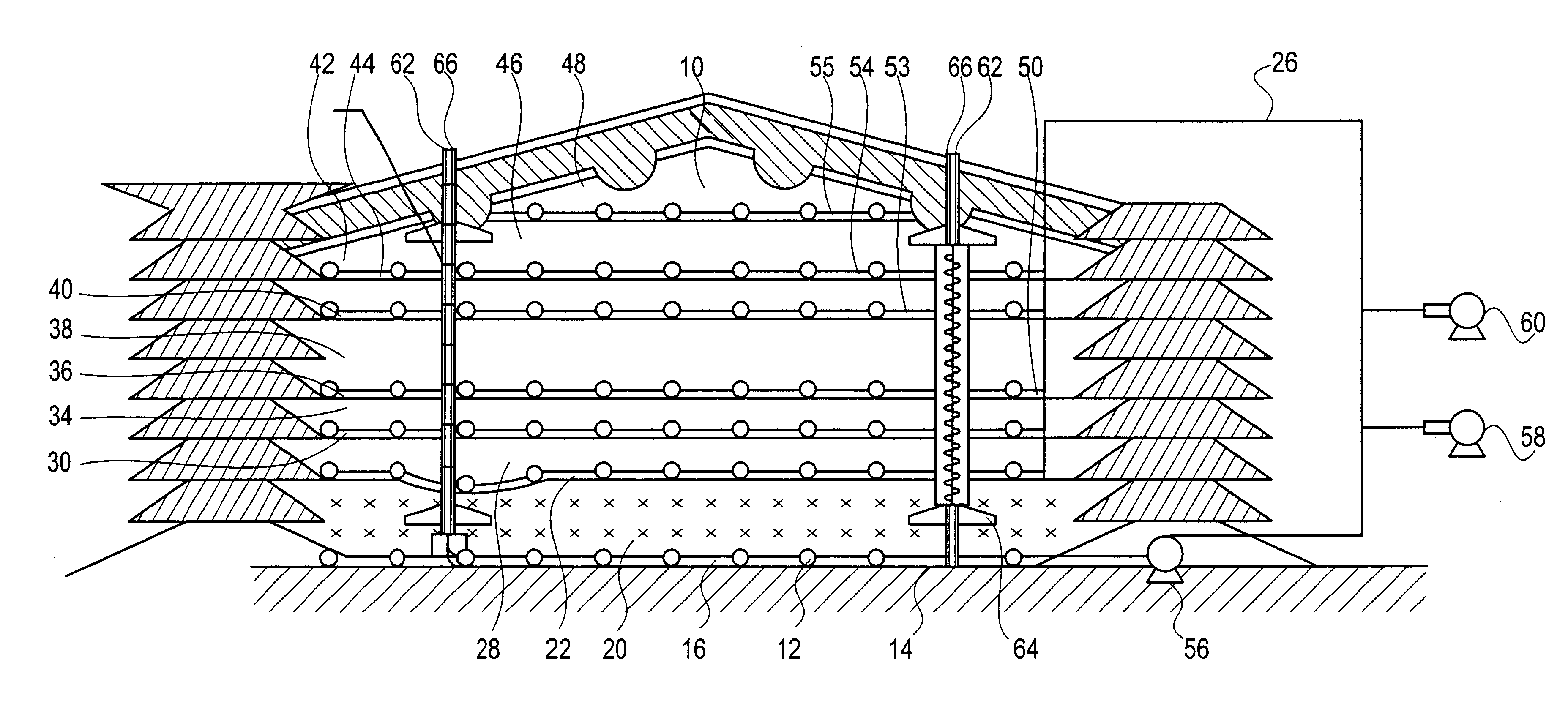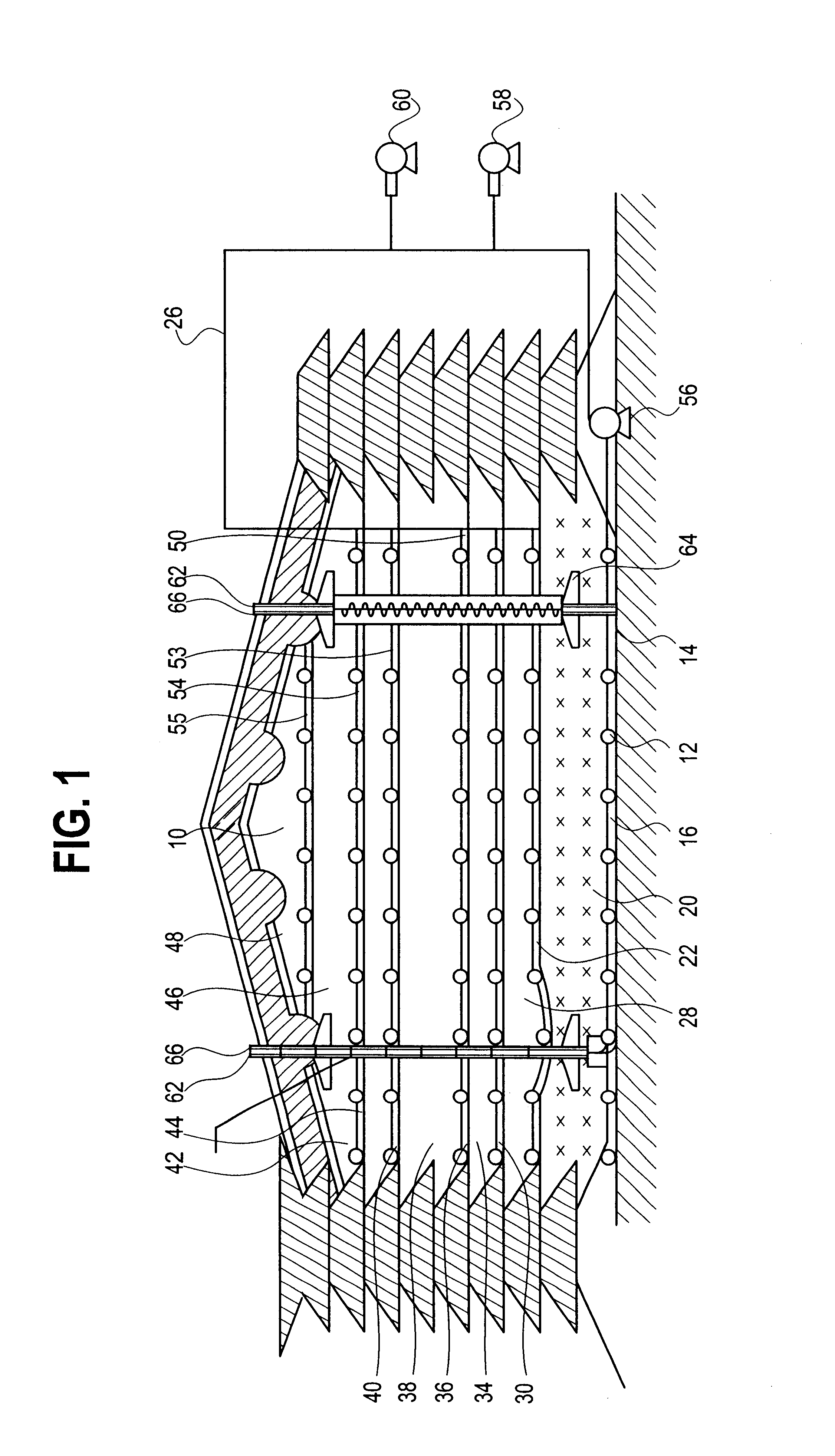Sequential aerobic/anaerobic solid waste landfill operation
a landfill operation and aerobic/anaerobic technology, applied in the field of aerobic/anaerobic solid waste landfill operation, can solve the problem that the vertical injection is most likely not as efficient as the horizontal pipe/trench application
- Summary
- Abstract
- Description
- Claims
- Application Information
AI Technical Summary
Benefits of technology
Problems solved by technology
Method used
Image
Examples
Embodiment Construction
The present invention relates to a landfill bioreactor and to a method for constructing the bioreactor that allows for the sequential aerobic and / or anaerobic bioremediation of biodegradable waste lifts.
FIG. 1 is a side cross-section view of a completed landfill bioreactor 10 of this invention. Landfill bioreactor 10 includes a leachate withdraw system 12 located at bottom 14 of landfill bioreactor 10. Landfill bioreactor 10 may include a bottom liner 16. If used, bottom liner 16 should be essentially impervious to liquids. Alternatively or in addition to having a bottom liner 16, the bottom of the landfill may include a layer of clay, cement or some other seal material. Generally, leachate withdraw system 12 will be located in a layer of gravel or some other pervious material. Locating the leachate withdrawal system 12 in gravel or some other porous material allows for the collection of leachate around the withdraw system 12. In addition, leachate withdraw system 12 will typically ...
PUM
 Login to View More
Login to View More Abstract
Description
Claims
Application Information
 Login to View More
Login to View More - R&D
- Intellectual Property
- Life Sciences
- Materials
- Tech Scout
- Unparalleled Data Quality
- Higher Quality Content
- 60% Fewer Hallucinations
Browse by: Latest US Patents, China's latest patents, Technical Efficacy Thesaurus, Application Domain, Technology Topic, Popular Technical Reports.
© 2025 PatSnap. All rights reserved.Legal|Privacy policy|Modern Slavery Act Transparency Statement|Sitemap|About US| Contact US: help@patsnap.com



